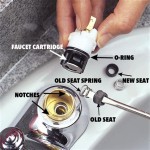Painting Fiberglass Bathtub Showers: A Comprehensive Guide
Fiberglass bathtub showers offer a cost-effective and durable alternative to traditional porcelain or cast iron options. Their lightweight nature simplifies installation, and the material is generally resistant to cracking and chipping. However, over time, fiberglass can become dull, discolored, or stained, impacting the overall aesthetic of a bathroom. Painting a fiberglass bathtub shower presents a viable solution for revitalizing its appearance without the expense of a full replacement. This article outlines the necessary steps, materials, and considerations for successfully painting a fiberglass bathtub shower, ensuring a long-lasting and visually appealing result.
Surface Preparation: The Foundation of a Successful Paint Job
The longevity and quality of any paint application hinge on thorough surface preparation. This is especially crucial for fiberglass surfaces, which are inherently smooth and require proper etching to ensure adequate paint adhesion. Neglecting this step will invariably lead to peeling, chipping, and a generally unsatisfactory finish.
The initial stage involves a comprehensive cleaning of the fiberglass surface. This necessitates the use of a non-abrasive household cleaner specifically designed for bathrooms. The goal is to remove all traces of soap scum, mildew, and mineral deposits. Harsh abrasive cleaners should be avoided as they can scratch the fiberglass surface, creating an uneven base for painting. A sponge or soft cloth is recommended for applying the cleaner, followed by a thorough rinsing with clean water.
Following the initial cleaning, the surface needs to be sanded to create a mechanical bond for the primer and paint. A fine-grit sandpaper, typically in the range of 220 to 320 grit, should be used. The sanding process should be thorough but gentle, focusing on dulling the existing finish rather than aggressively removing material. Consistent, even pressure is key to avoiding uneven sanding marks. It is imperative to wear a dust mask during sanding to prevent inhalation of fiberglass particles.
After sanding, meticulously remove all sanding dust. A vacuum cleaner with a brush attachment works well for extracting dust from crevices and corners. Subsequently, wipe down the entire surface with a tack cloth. A tack cloth is a specialized cloth impregnated with a slightly sticky substance that effectively picks up any remaining dust particles. This ensures a clean and dust-free surface, which is essential for optimal paint adhesion.
Finally, inspect the fiberglass surface for any cracks, chips, or imperfections. These flaws should be addressed before painting. Small cracks can be filled with an epoxy-based filler specifically designed for fiberglass repair. Follow the manufacturer's instructions carefully for mixing and applying the filler. Allow the filler to fully cure before sanding it smooth to blend seamlessly with the surrounding surface. Larger cracks or significant damage may necessitate professional repair.
Selecting the Right Primer and Paint: Ensuring Durability and Longevity
Choosing the appropriate primer and paint is paramount for achieving a durable and long-lasting finish on a fiberglass bathtub shower. The harsh environment of a bathroom, characterized by high humidity and frequent temperature fluctuations, necessitates the use of specialized products formulated to withstand these conditions.
An epoxy-based primer is highly recommended for fiberglass surfaces. Epoxy primers offer superior adhesion, creating a strong bond between the fiberglass and the topcoat. They are also resistant to water damage and chemicals, providing a protective barrier against moisture penetration and potential staining. When selecting an epoxy primer, ensure it is specifically formulated for use on fiberglass and can withstand the rigors of a bathroom environment. Follow the manufacturer's instructions regarding mixing ratios and application techniques.
For the topcoat, a two-part epoxy paint is generally considered the best option for fiberglass bathtub showers. Two-part epoxy paints consist of a resin and a hardener that are mixed together before application. This chemical reaction creates a very hard, durable, and waterproof finish. They offer excellent resistance to water, chemicals, and abrasion, making them ideal for the demanding conditions of a shower environment. Single-part epoxy paints are available; however, they generally do not offer the same level of durability and chemical resistance as two-part systems.
When choosing a paint color, consider the overall aesthetic of the bathroom and the desired effect. Lighter colors can brighten up a small or dimly lit bathroom, while darker colors can create a more dramatic and sophisticated look. Semi-gloss or gloss finishes are typically recommended for bathrooms as they are easier to clean and more resistant to moisture absorption than matte finishes. Consider the long-term maintenance requirements of the chosen color and finish. Darker colors, for example, may show soap scum and water spots more readily than lighter colors.
Always consult with a paint professional or review technical data sheets to ensure compatibility between the primer and paint. Using incompatible products can result in adhesion problems, premature failure, and an unsatisfactory finish. Furthermore, always follow the manufacturer's instructions regarding application techniques, drying times, and safety precautions.
Application Techniques and Safety Precautions: Achieving a Professional Finish
Proper application techniques are essential for achieving a smooth, even, and professional-looking finish when painting a fiberglass bathtub shower. Rushing the process or neglecting proper safety precautions can compromise the quality of the paint job and potentially expose individuals to harmful chemicals.
Before commencing the painting process, ensure adequate ventilation in the bathroom. Open windows and use a fan to circulate air and remove fumes. Wear appropriate personal protective equipment (PPE), including a respirator to protect against inhalation of paint fumes, safety glasses to protect the eyes, and gloves to protect the skin. Cover surrounding surfaces, such as the floor, walls, and fixtures, with drop cloths or plastic sheeting to prevent paint splatters.
When applying the primer and paint, use a high-quality brush or roller specifically designed for epoxy coatings. A foam roller can provide a smooth, even finish, while a brush is useful for reaching tight corners and intricate areas. Apply thin, even coats, avoiding excessive buildup or drips. Allow each coat to dry completely according to the manufacturer's instructions before applying the next coat. Multiple thin coats are preferable to a single thick coat, as they are less prone to runs, sags, and cracking.
Between coats, lightly sand the surface with fine-grit sandpaper (400 grit or higher) to remove any imperfections or nibs. This will help create a smoother and more uniform finish. Clean the surface thoroughly after sanding to remove all dust particles.
Pay particular attention to edges and corners, ensuring that they are adequately coated. Use painter's tape to create crisp, clean lines around the edges of the bathtub shower and to protect adjacent surfaces. Remove the painter's tape carefully after the final coat of paint has dried, pulling it away at a 45-degree angle to avoid chipping the paint.
Allow the painted surface to fully cure according to the manufacturer's instructions before using the shower. Curing times can vary depending on the type of paint and the ambient temperature and humidity. Avoid harsh cleaning products and abrasive scrub brushes when cleaning the painted surface. Use a mild detergent and a soft cloth or sponge to maintain the finish.
Proper disposal of used paint, brushes, rollers, and other materials is crucial. Consult local regulations regarding the disposal of hazardous waste. Many communities offer paint recycling programs or designated drop-off locations for hazardous materials. Never pour paint down the drain or into the environment.

How To Paint A Bathtub Yourself The Nifty Nester

How To Refinish Your Bathtub For 50

Image Result For Paint Fiberglass Tub Refinishing Refinish Bathtub Remodel

Bathroom Makeover Day 11 How To Paint A Bathtub Addicted 2 Decorating

Can Plastic Acrylic Or Fiberglass Bathtubs Shower Stalls Be Reglazed Refinished America Refinishing Pros

How To Paint Your Bathtub Yes Seriously Love Renovations

Diy Painted Bathtub Follow Up Your Questions Answered Addicted 2 Decorating

Painting A Tub Shower Fiberglass Using All In One Paint Color Cashmere

How To Paint Your Bathtub Yes Seriously Love Renovations

How To Paint A Tub With Rustoleum What Not Do
Related Posts







